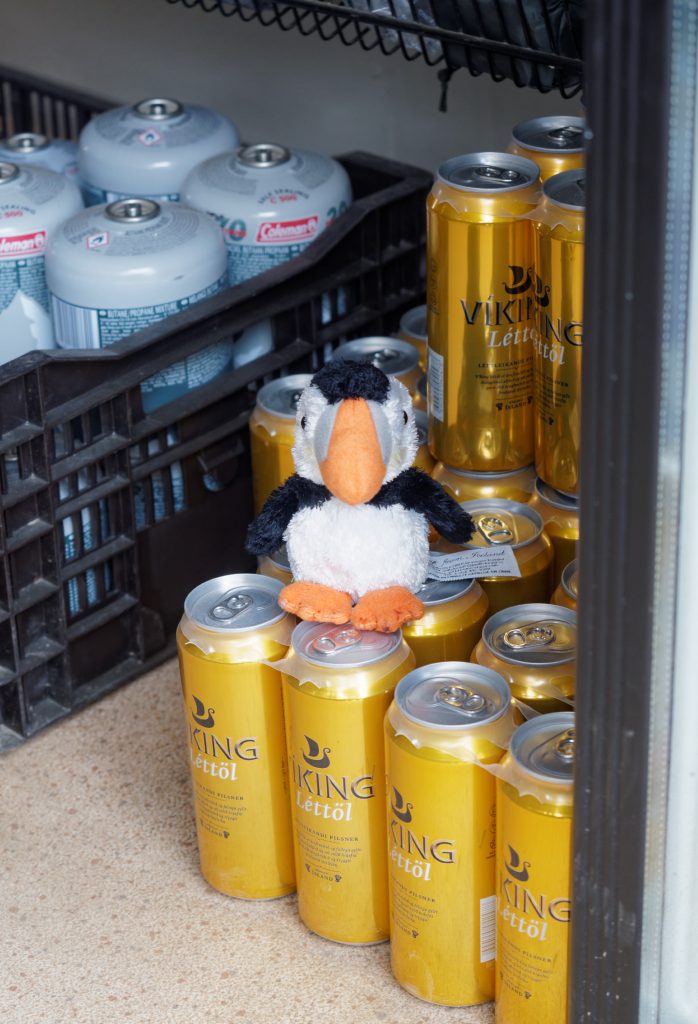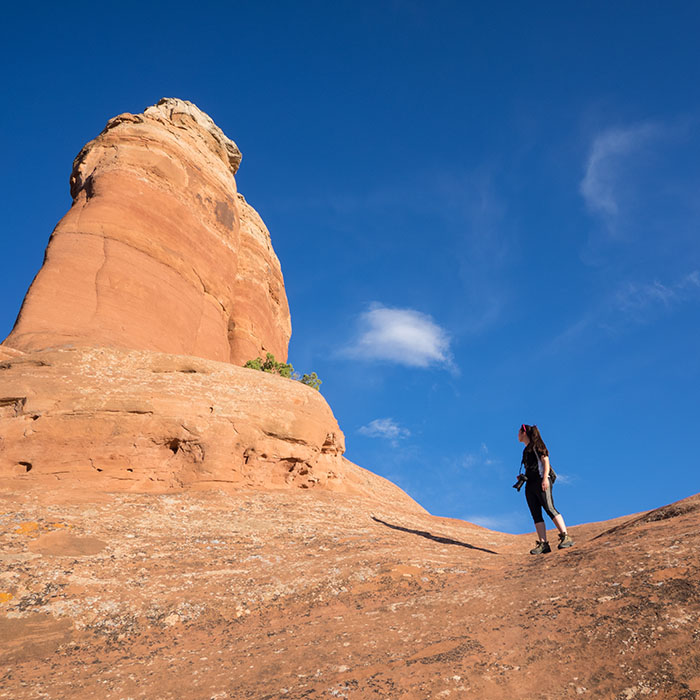We are excited to announce our 2017 field trip to Iceland and are even more excited to be able to offer it to current students, just graduated seniors and alumni. The trip will begin and end at Boston airport (alumni could arrange for different starting points), includes two days in Reykjavik and our classic hike along the Laugavegur.
The trip dates are Sunday, June 18 2017 – Friday, June 30 2016. The cost will be between $1750 and $2000 (more below).
While in Iceland we will camp or stay in Huts (at Baldvinsskáli, Emstrur and Hrafntinnusker) that are operated by the Icelandic Touring Association (Ferðafélag Íslands). We’ve been to Iceland many times and the weather has ranged from super sunny and nice to driving rain and utterly miserable with everything in between – most of the time it’s pretty nice! In any case, we supply the tents, but you should bring a good sleeping bag. Every once in a while we throw in some geothermal heat on top of a volcano.
The total cost of the trip (between $1750 – $2000) dollars will depend a little bit on the cost of local transportation and airfare. We’re getting quotes for the bus right now, airfare will be influenced by when we are able to lock in the tickets. That price includes airfare from Boston (if you are an alumna / alumnus and want to meet us in Iceland lets talk), local transportation, all the food on the hike, and a visit to the Blue Lagoon at the end of the trip (overrated, but your fellow folks on the plane home will appreciate it). It will not include food in Reykjavik where you can enjoy the most amazing hot dogs ever or dine in five star restaurants on Arctic char, lamb chops and smoked puffin (supposedly rather salty).
The centerpiece of the trip will be a hike from Skogar (on the southern coast) to the hot springs of Landmannalaugar. Daily hikes range from 8 – 10 miles a day, and we usually are in camp by early afternoon. That leaves plenty of time to hang out, relax, stalk the local flora or just tend that blister on your foot.
Every once in a while we will have to ford a river. It’s exciting the first time, and at the end you’ll think nothing of swimming through glacial streams the size of the Amazon river. Piece of cake! OK, I exaggerate a bit: the rivers are just deep enough to earn some bragging rights (see below).

Most river crossings are bridged. The ones that are not ain’t that bad. The water is well-heated and pleasantly refreshing. :-) Yeah, check out Jenna’s face.
While on the trail we’ll do our own cooking. By now we have it pretty much figured out and we’ll chat with you guys about food choices, menu planning etc.
Itinerary:
Sunday, June 18th – leave Boston in the evening (around 8 – 9 PM)
Monday, June 19th – arrive in Reykjavik, transfer to campground, time to explore the city on your own (very walkable), check out the dried fish or local hot dogs. The best dogs can be found right next to our campsite (Bill Clinton had no idea)
Tuesday, June 20 – Like pretty much all tourists, we’ll do the Golden Circle, a tour of Thingvellir, Gullfoss and Geysir. Unlike 99.9% of all tourists we’ll spend the night at Geysir so we’ll have plenty of time to enjoy the geysers in the evening sun. That day you’re on your own for dinner. The local restaurant has plenty of choices, and the campground isn’t really great for cooking (a conspiracy ??)
Wednesday, June 21 – today our hike begins in earnest: after a morning bus ride to Selfoss to stock up on last minute supplies we head east along the coast, where we might stop at Seljalandsfoss. Here you can walk behind a waterfall (also last chance for hot dogs, muffins, coffee). Then we begin our hike at Skogar with hundreds of steps straight up from the parking lot, hundreds of waterfalls, and a hut just under the glacier where we will spend the night. It’s steep, it’s long, the weather will likely turn on us halfway up, but once you’re at the hut it is sooooo worth it!
Thursday, June 22 – Today we hike through the pass at Fimmvörðuháls, where we will most likely encounter some snow and ice before we reach the two craters Magni and Modi (named after the sons of Thor), the site of the first eruption of the Eyjafjallajökull volcanic eruption. If you’re lucky the earth might still be toasty warm, years after the event.
From there we head down into Thórsmörk, where we camp in a nice sheltered campground near the hut. Thórsmörk, by the way, has the third largest flag in Iceland (according to the warden).
Friday, June 23 – Today we stay in Thórsmörk. There are plenty of little hikes to do (Christoph still wants to explore the famous cave waterfall, which is the star of many German guidebooks, but which has escaped him now twice), you can head over the mountain to hang out at the next bar or just be lazy and relax after two days of hiking.
Saturday, June 24 – We start the day with our first stream crossing (nothing to worry about) and then hike all day along the river Markarfljót, in sight of one of Iceland’s coolest mountains, Einhyrningur. When we’re almost at the hut as the crow flies we still have to go way down to the bottom of a steep gorge, cross a raging stream (on a bridge) and work our way back up the infamous Botnar Step before we reach our destination, the hut at Emstrur (Botnar).
Camping here is so-so, and we’ll stay in the hut.
Sunday, June 25 – Today the trail goes through a large gravel plain, where we hike between big moss-covered volcanoes. After a relatively flat hike and a few river crossings we camp at the hut at Álftavatn. The lake is close and if the weather is nice you might consider a swim, but be forewarned: even though the lake is supposedly very deep, the northeast shore is not and you walk for hundreds of meters until you’re in deep enough water for a swim. Going in is not so bad, but going out, wet, in cold wind … :-(
So it might be better to go for an evening hike or take a nice hot shower.
Monday, June 26 – Up to Hrafntinnusker! After a nice walk in the valley we climb up the side of a big caldera to go into the Landmannalaugar region proper. This can be a great hike with amazing views if the weather cooperates (with possibly a little side trip up to Háskerðingur, a really cool, but very steep mountain with an even more amazing view). In any case, we’ll stay at Hrafntinnusker. The camping here really stinks and that’s why we stay in the hut.
Tuesday, June 27 – Today we have one more ridge to climb before we head over the rolling rhyolite hills of Landmannalaugar, past the first hot springs (too hot, too muddy) and amazing lava flows. Just before we head down to the hut we have to descend a couple hundred meters. Here you can smile at the poor folks who have to crawl up the steep hill on their way to Thórsmörk. Don’t feel too bad for them – they have four or five days of amazing hiking still ahead of them… We head down to the hut, where we set up camp before we jump into the springs.
Wednesday, June 28th – we have the entire day to explore the amazing landscape of Landmannalaugar. You can hike up Bláhnjúkur, a nice little mountain with an amazing view, head out farther into the wilderness preserve, or just take it easy, drink coffee with “ze Germans” in the Mountain mall, hang out in the hot springs, or catch up on sleep. The choice is yours.
Thursday, June 29 – This afternoon the bus will pick us up and we’ll head back to reykjavik, where you have the rest of the day to shop for presents (Jon is the expert on Icelandic sweaters), take the elevator up Hallgrimskirkja (great view across the city), or soak your bones in the hot tub (and follow it up with three last hot dogs). It’s all up to you.

Reykjavik’s skyline reflected in the windows of the new opera house. Yes, that would be another option.
Friday, June 30 – One last chance to sample Icelandic pastries for breakfast (very sugary and delicious) before the bus picks us up for a trip to the Blue Lagoon. Here you can soak in geothermal waters, get a silica mud facial, buy expensive souvenirs and clean up, so your neighbors on the plane won’t hate you. From there it;s only a short trip to the airport and back to Boston.
So, if you want to go and are not on my list yet, drop me an e-mail at:
christoph.geiss_at_trincoll.edu (you know how to change the _at_ into an @
We can’t wait to hear from you!
Christoph
P.S.Oh, and for all you guys who want to know such details:
Jon and Christoph will be leading and organizing the trip, Amber will chase the elusive Icelandic salamander (Salamandra islandica heklaensis), while we expect Krista to identify every cinquefoil down to the subspecies level.















































